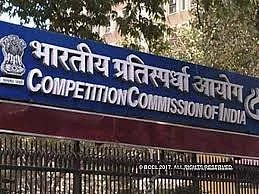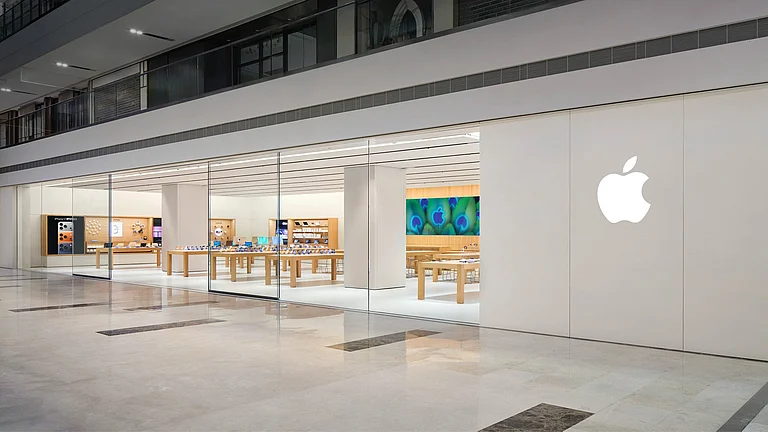The finance and commerce ministries of the NDA government are wooing global technology giants with promises of subsidies, scale and opportunity. However, their counterparts in the Ministry of Corporate Affairs—particularly the competition regulators at the Competition Commission of India (CCI)—arbitrarily scrutinise and penalise the same companies. This regulatory schizophrenia threatens India’s ambitions of dominating the technological future.
Caught in the Crosshairs
Take Apple Inc’s efforts. Attracted by the promise of a large market and PLI [production linked incentive] scheme, the share of iPhones assembled in India has doubled, rising from 7% of global production in FY23 to 14% in FY24. Apple plans to shift nearly a third of its iPhone assembly to India by 2027, as part of its China+1 strategy. Simultaneously, the CCI has dragged Apple through a three-year investigation into its App Store practices, despite scant evidence of harm to consumers.
Apple isn’t the exception. The bias runs deep, embedded in Section 4 of India’s Competition Act, which treats large, successful, globally competitive firms as inherently suspect. By conflating size with dominance and abuse, regulators bypass a critical question: are consumers being harmed?
Google has faced relentless scrutiny. In 2022, the CCI penalised Google Rs 936 crore for requiring app developers to use the Play Store billing system for in-app purchases. This was calculated as 7% of Google’s average revenue from India for FY18-21. Where Google claimed the policy enhanced security, the CCI labelled it an abuse of dominance because of Play Store’s control over app distribution on over 90% of India’s Android devices. This is just one of the three cases where Google has been penalised. And there are four more cases where Google is under investigation.
The CCI also accused Google Pay of “self-preferencing” on the Play Store, overlooking India’s highly competitive payments market. Thanks to UPI’s interoperability, consumers switch freely, with PhonePe currently leading despite Google’s platform presence. Far from harming consumers, this is a case where self-preferencing does not even lead to dominance in the payments market due to other institutional checks.
Big tech firms frequently bundle services, such as preinstalled apps or search result prioritisation. Yet, digital markets defy old lock-in models like printer-cartridge bundling. Dominance in one product rarely guarantees success in others because of low switching costs inherent to these products. For instance, Apple Maps holds just 25% of the US navigation market despite being bundled on iPhones, which are 56% of smartphone sales. Even Google, with its vast troves of data, may lose the online search race to AI start-ups. However, the CCI cannot look past size.
The CCI is targeting not just global giants but also the homegrown successes the NDA government champions. Zomato and Swiggy have been under investigation since 2022 for offering restaurants better terms for exclusive listings to lock them in.
Uber Versus Meru
The CCI does not require evidence of consumer harm to pursue competition cases. Instead, complaints frequently stem from competitors exploiting weak standing requirements. In 2015, incumbent Meru Cabs alleged that Uber was eliminating competition in Delhi through below-cost fares. The CCI demanded Uber submit extensive data, including market share figures, pricing records and driver incentives—formatted in Arial 12 font, double-spaced, on A4 bond paper with strict margin specifications. Uber had to file not the standard triplicates but octuplicates.
The CCI dismissed the case in 2016, but Meru appealed, requiring Uber to provide fresh rounds of evidence. The appellate tribunal overturned the dismissal and ordered an investigation into whether Uber’s pricing reflected efficiency or predatory tactics. Uber’s appeal to the Supreme Court in 2017 resulted in a two-year delay before the court upheld the tribunal’s assessment and directed the investigation back to the CCI. By 2021, after scrutinising Uber’s pricing algorithms, driver contracts and trip economics, the CCI reaffirmed its original conclusion: Uber was not at fault. And the consumers already knew this: riders enjoyed ample choice, switching freely between Uber, Ola, traditional taxis and Rapido’s auto-rickshaws. Even state-backed platforms like Karnataka’s Namma Yatri app entered the dynamic market.
Had Uber lost in 2016, it would have faced penalties of up to 10% of its Indian turnover. A 2017 Supreme Court ruling narrowed the penalty base to revenues from the specific service—in Uber’s case, it would have cost Uber’s Delhi revenue. However, the CCI later deemed this impractical for digital platforms and considered penalties on global revenues. This approach has already resulted in Google being fined Rs 2,410 crore in three cases, equivalent to the Union government’s annual Smart Cities programme budget. A 2023 amendment legislated this interpretation by explicitly linking penalties to global turnover, exacerbating risks for platform-based businesses.
In its latest clash, Google is under scrutiny for requiring smart-TV manufacturers to preinstall its app suite. Unlike Uber’s six-year ordeal, Google may opt for a quicker resolution through a new settlement scheme offering 15% discount on the penalty. This sets a troubling precedent where firms feel compelled to settle, not necessarily because they are guilty of abusing their dominant position, but to avoid years of regulatory uncertainty and mounting costs. The losers, as always, are the consumers and potential employees, when large firms don’t expand.
India aims to be a global tech hub and attract investment, yet flawed regulation is making investors think twice and policy uncertainty is hindering foreign investment in the country.
(Shruti Rajagopalan is a senior research fellow and Shreyas Narla is a research scholar at Mercatus Center at George Mason University. Views are personal.)

























